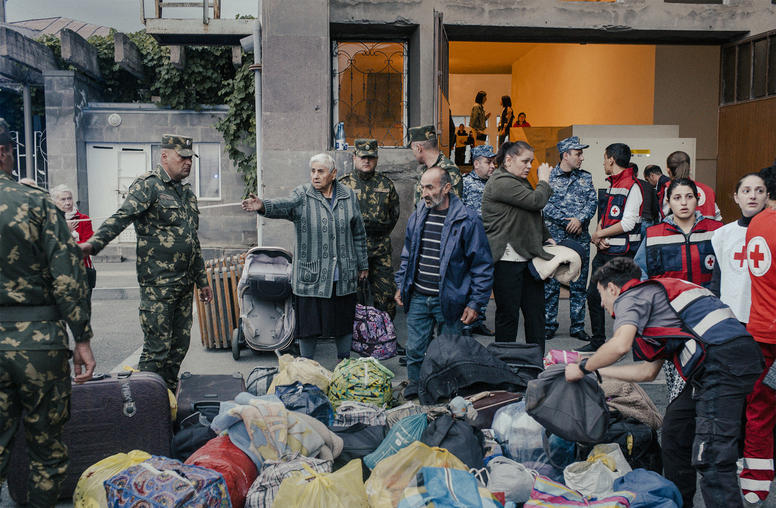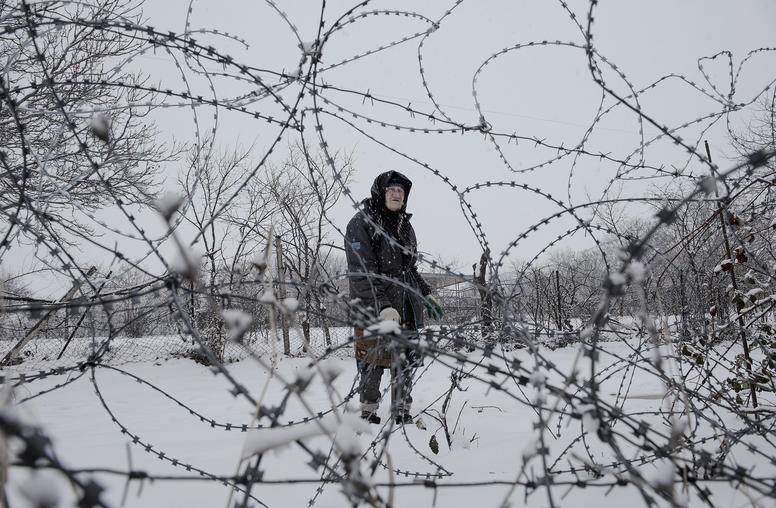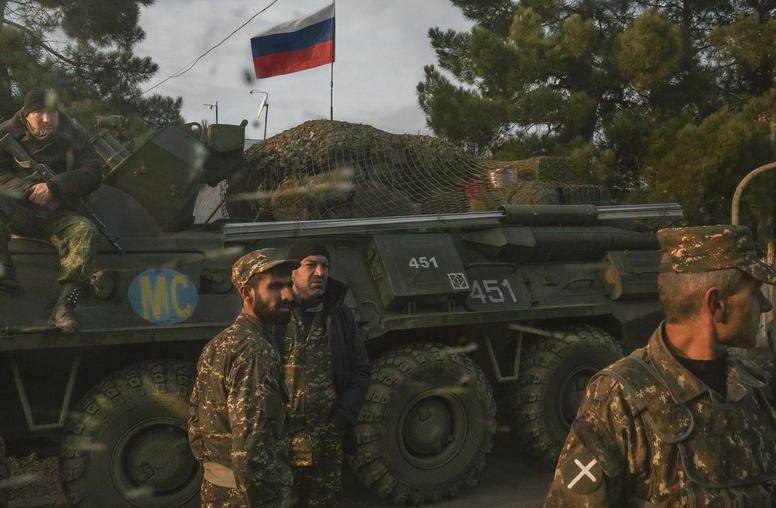Amid Ukraine War, Armenia and Azerbaijan Fighting Risks Broader Conflict
With Russia bogged down in Ukraine, its military has limited bandwidth to intervene.
Armenia and Azerbaijan reported nearly 100 combined deaths Tuesday, in the latest flare-up of violence between the two South Caucasus countries. For decades, tensions have simmered over the disputed Nagorno-Karabakh region, which is controlled by ethnic Armenians and claims independence but is internationally recognized as Azerbaijan’s territory. There are fears that these tensions could boil over into a larger conflagration, like the 2020 Armenia-Azerbaijan war that resulted in over 1,000 casualties. In 2020, Russian President Vladimir Putin negotiated a cease-fire to end the fighting. Today, with Russia bogged down in Ukraine, it is unclear if the Russian leader will be able to achieve a similar result, as regional stability hangs in the balance.

USIP’s Mary Glantz analyzes the risk of a broader conflict, Russia’s role in mediating between the two sides, how the Ukraine war impacts the situation and what role the United States can play.
What sparked this latest flare-up? Is there a risk this could escalate into a broader conflict, like in 2020?
While there are frequently small violent clashes across the line of contact between Armenian and Azerbaijani forces, the latest violence seems a bit different. This flare-up reportedly involved hours of Azerbaijani shelling against territory inside Armenia. As a result, the sides claim that 49 Armenian and 50 Azerbaijani soldiers were killed. Armenia and Azerbaijan have blamed each other for instigating the latest clash. Armenia said Azerbaijan had begun shelling towns in Armenia, forcing it to respond. Azerbaijan argued Armenia had tried to sabotage by mining Azerbaijani positions, forcing an Azerbaijani response.
This is the largest flare up since the 2020 war and could pose a risk of similar escalation. That war was preceded by an increase in tensions between the two countries following a several-day long exchange of artillery fire. There are some significant differences, though, which may help to mitigate the risk of broader conflict. First, Turkey strongly supported Azerbaijan in its 2020 offensive. Second, there were no Russian peacekeepers deployed in the region in 2020. This time, Russian President Vladimir Putin and Turkish President Tayyip Erdogan have already agreed to discuss the clashes, presumably with the aim to find a way to calm the situation.
Both Armenia and Azerbaijan have close ties with Russia, but Armenia has called on Russia to implement the Collective Security Treaty Organization (CTSO) charter, similar to NATO’s Article 5. How does this affect Russia’s bid to mediate and stay out of choosing sides in the conflict?
Armenia has yet to successfully evoke a NATO Article 5-type response from the CSTO — that is an assertion of the principle that an attack against one ally is an attack against all. What the CSTO has agreed to in this case is much more like a NATO Article 4 response — consultations when an ally feels threatened. The CSTO has agreed to send a special mission to Azerbaijan to compile a report to be reviewed at the next session of the Collective Security Council (this fall in Yerevan, Armenia). They will also set up a working group to study the situation.
Because this is not a military response (or even a clear statement of support for an ally against external aggression), Moscow maintains its freedom to act as a mediator in this conflict. To that end, Putin apparently briefed the CSTO leaders of Russia’s ongoing efforts to calm the conflict. He also has a planned meeting with Erdogan, who historically has supported Azerbaijan.
How has Russia’s invasion of Ukraine impacted the situation?
Russia’s invasion of Ukraine has undoubtedly had an impact on the situation in Nagorno-Karabakh. Some analysts believe that Azerbaijan initiated this latest series of attacks as a way to test Russian ability and willingness to come to Armenia’s defense. In that scenario, Azerbaijan, still with the military strength it brought to bear in 2020, believes Russia to be too bogged down in Ukraine to want to resist Azerbaijani offensives. With Azerbaijani-Armenian peace talks still going nowhere, Baku may thus see now as the perfect opportunity to take with its military what it is unable to gather through diplomacy.
At the same time, Azerbaijan may be right to a certain extent. The war in Ukraine has shown that Russia does not possess or wield the military power many once believed. With Russia struggling to defend against Ukrainian counteroffensives in Kharkiv and Kherson, it really is doubtful that Russia could make a military difference in an Azerbaijani-Armenian conflict right now. The Putin-Erdogan conversations will probably be very important. If both agree that Azerbaijan should not pursue a military solution to the conflict right now, Baku may be more hesitant to pursue that course.
Beyond quelling the current fighting, is there a plan for addressing both sides’ claims to Nagorno-Karabakh? Is there a role for the United States?
The best outcome for the Nagorno-Karabakh conflict would be a diplomatic solution. The United States certainly has an important role to play in that and has been doing so since 1992 as a co-chair of the Organization for Security and Co-operation in Europe’s Minsk Group. In recent years, however, Russia and Turkey have assumed a more active role in negotiating between the two countries. Indeed, it was Putin who took the lead in negotiating a cease-fire to end the 2020 war. Russia sent almost 2,000 peacekeepers to the area and they also established a joint monitoring center with Turkey. That stopped the fighting in 2020, but, as attested to by the latest round of violence, the underlying conflict remains.
The European Union has been mediating discussions between Baku and Yerevan over a more comprehensive peace settlement, and these are supposed to continue in November. A key issue will be the status of Nagorno-Karabakh and the ethnic Armenians who live there. Given the continued instability and bloodshed in the region, it is definitely important that the European Union and the United States continue their efforts to find a diplomatic solution to this conflict.



